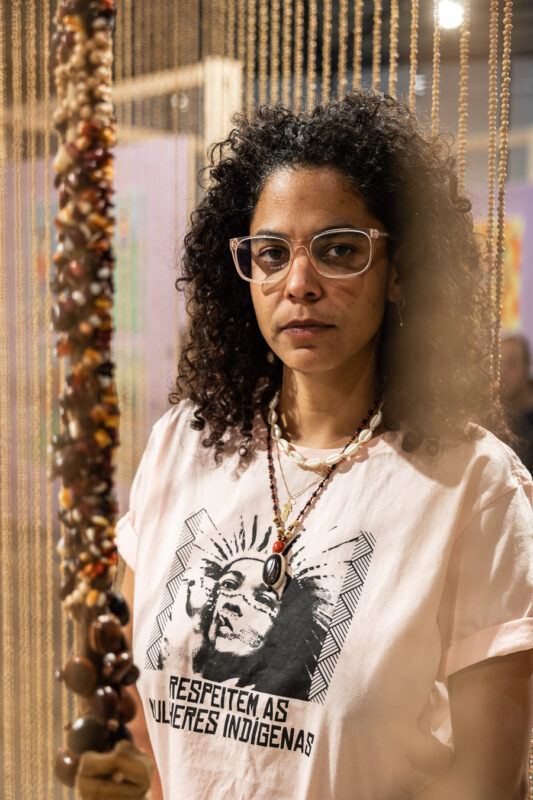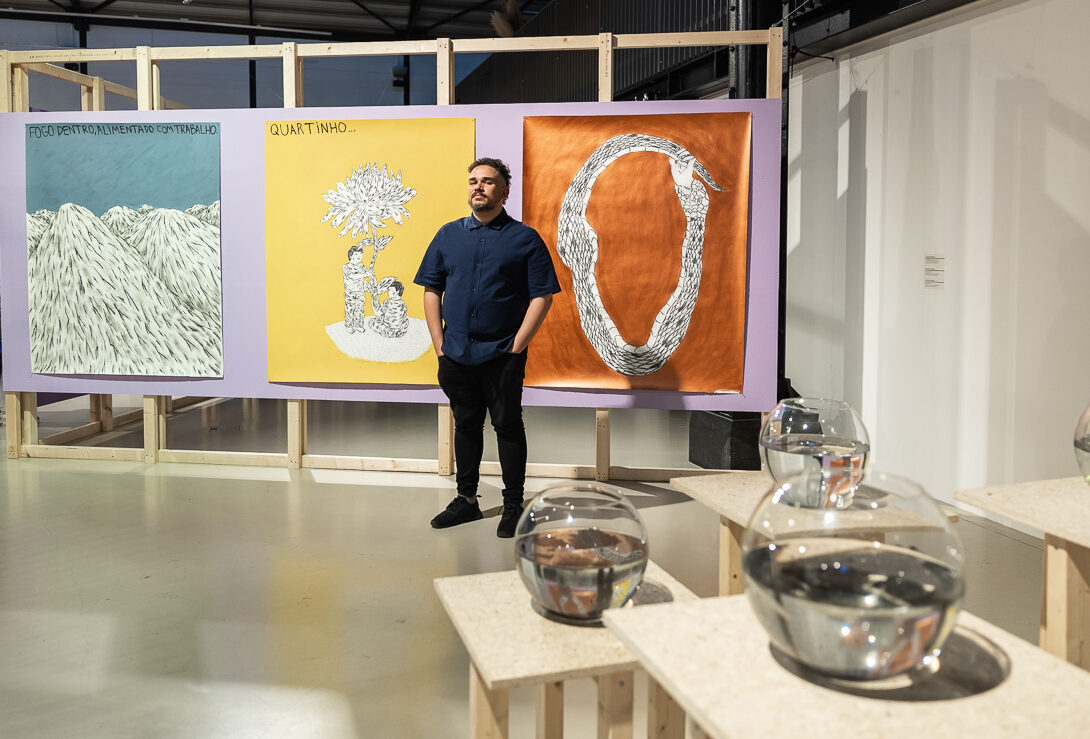 Curator Raphael Fonseca - 'The Silence of Tired Tongues' (2022) © Maarten Nauw / Framer Framed
Curator Raphael Fonseca - 'The Silence of Tired Tongues' (2022) © Maarten Nauw / Framer Framed 'The Silence of Tired Tongues' by Curator Raphael Fonseca
The Silence of Tired Tongues, presents the works of thirteen emerging artists born in Brazil. The artworks in the group exhibition bring together a sense of ‘saudade’, which can be translated as a mixture of melancholy and longing. The curator of the exhibition, Raphael Fonseca, wrote a statement for the exhibition catalogue.
Text by Raphael Fonseca

Opening The Silence of Tired Tongues (2022), Photo: © Maarten Nauw / Framer Framed
In January 2020, Framer Framed invited me to think about a curatorial project about the production of visual arts in Brazil today. After accepting the proposal, there was a lot of back and forth regarding the real possibilities of doing this project in Amsterdam; it was just a few months before Brazil, and much of the world were directly affected by the coronavirus pandemic. In this journey of more than two years, we deepened our experience of a world full of excesses: hyperconnectivity regarding our virtual communication, increasing military conflicts, and consequences that will be felt indefinitely due to the coronavirus pandemic. The world flows and will continue to be permeated by tensions followed in real-time from our homes’ comfort (or discomfort).
A distinctive impression accompanied this project from its inception and was endorsed by the pandemic that still affects us: this was not the time for big parties. There is already a particular trajectory of curatorial projects that, since they focus on Brazil’s continental country, point to its festive, collective, celebratory, and, as Nicolas Bourriaud wrote more than two decades ago, “relational” character.[1] Some of these exhibitions were configured as “authentic colour” parties — alongside artistic propositions that the public could physically experience, there was also the presence of essential artists institutionalised by the art system through painting and works on a big scale.[2] This set of pieces tended to be shown and used as examples of the artistic production of a country famous for its movement, collective ecstasy, and joy. It’s like a samba school immortalised in a 1985 song: “samba, sweat, and beer.”[3]

Exhibition View: The Silence of Tired Tongues (2022), Photo: © Eva Broekma / Framer Framed
Dear readers, don’t get me wrong: this aspect of the production of visual arts in Brazil was, is, and always will be essential to the country’s narratives of the history of art. I share the opinion that many of the artists participating in these projects are extremely important; it is essential to surrender to a reading of Brazilian culture that favours Carnival and its Dionysian energy. However, in addition to the hegemony of these curatorial discourses in projects about the country organised internationally[4], this certainly did not seem the most auspicious moment for a big party — amid the four years of Jair Bolsonaro’s presidency, what would we be celebrating exactly?
Should we, therefore, instrumentalise images to build an exhibition dedicated to the destruction of the “myth” — as he states — that remains in the highest political position in Brazil? Is this the moment for us to gather works that place themselves on an invisible border between art and activism and collectively shout “Fora Bolsonaro!” (“Out Bolsonaro!”)? Each curator would give a different answer to this question; far from using the visual arts and the artists literally, I prefer to believe in the challenges and mysteries that images can still (and perhaps should) provide us with polysemy. In a historical moment when so many people want and/or need to talk — about politics, the pandemic, and their own lives in countless online transmissions with video cameras — I thought that listening, silence, and tiredness could be starting points as well as points of contact for this exhibition.

Sofia Ceasar – Overheatings, The Silence of Tired Tongues (2022) © Eva Broekma / Framer Framed
My mother — and a large part of the Brazilian population that experienced the military dictatorship (1964-1982) — listened to the albums of Elis Regina, one of the most celebrated Brazilian singers. Not only was she revered for her voice and varied repertoire, she was also famous for her public opinions against the military regime. One day, reflecting on how it would be possible to name this project, a song I often heard during my childhood came to mind: ‘Casa no campo’ (House in the country), composed by Tavito and Zé Rodrix, and immortalised in a recording by Elis Regina, from 1972. The song is based on verses expressing wishes; its first verse says: “I want a house in the country / where I can write many folk-rock songs.”[5] Later, after a certain bucolic presence in the composition, Elis sings, “I want the silence of tired tongues”. The verses of this song are an elegy to stillness in a world already seen as excessive; let us not forget that 1972 is one of the years that make up the so-called “years of lead” (1968-1974), a period considered the most repressive and violent of the Brazilian government during the dictatorship.
After so many years, I heard the song again and was intrigued by this desire for silence — indeed, why are these tongues tired? Had they talked too much? Were they exhausted from screaming in public space? Tired of disagreeing? Is this verse referring to the silence and post-orgiastic fatigue where the tongues would be exhausted, sweaty, and ecstatic? Fifty years after their release, these verses still invite many interpretations, and within the current Brazilian political landscape, they have not lost their effervescence. Being silent is also essential and can be seen both as an existential modus operandi and a political tool. Publicly admitting our fatigue denotes courage and humanity.

Tiago Sant’Ana – Foundation, The Silence of Tired Tongues (2022) Photo: © Eva Broekma / Framer Framed
Therefore, the title of this project suggests a semantic field between silences, tiredness, and tongues. Introspection, melancholy, and repetition seem to be, at first glance, some of the critical elements of this brief encounter between the productions of the thirteen artists who compose this exhibition at Framer Framed.
Sofia Caesar, Vitória Cribb and Wisrah Villefort‘s research points directly to the continued relationships we have with virtual images, their (invisible?) borders with the physical world, and how this constant game leads us to a state of mental glitch. Meanwhile, through installations made with organic materials, Aline Baiana and Tiago Sant’Ana lead us to reflect on some of the colonial traumas that haunt Brazil and the Global South.
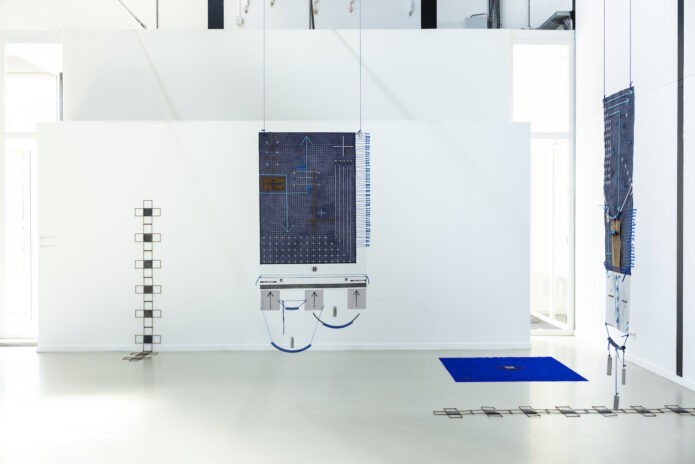
Luana Vitra – Bare wire, confusion bait (2021-2022), The Silence of Tired Tongues (2022), Photo: © Eva Broekma / Framer Framed
In dialogue with these artists and their reflections on ecology and the notion of landscape, while bringing to light their apparent interest in the frictions between representation, abstraction, and presence, we have the works of Julia Arbex, Luana Vitra, and Rodrigo Martins. Benedito Ferreira and Yuli Yamagata, in turn, share their interest not only in the human body but in the possibility of creating images that suggest new forms of existence in the world. Finally, if tiredness is a crucial element of this exhibition, it is important to have artists whose interests — in the notions of fiction, fantasy, and even delirium — are central as we can see in the artistic research of Arthur Chaves, Estêvão Parreiras, and Tadáskía.
The Silence of Tired Tongues is one of the many possible answers to the equation between the visual arts, contemporaneity and “Brazil” — in quotation marks because, more than a country, it is also a secular idea invented by many hands. Far from a solid panorama of the visual arts in the region, this exhibition assumes itself as a discreet fragment. Instead of hegemonic and official narratives, we prefer verses chanted collectively, from generation to generation, considered fictional, invite many readings, and lead to the fatigue of our tongues.
It remains the wish that the audience visit the exhibition and learn something from our verses sung in a low voice. Let’s hope that soon our tongues will be at rest and our throats ready to scream again.

Exhibition view: The Silence of Tired Tongues (2022), Photo: © Eva Broekma / Framer Framed
[1] BOURRIAUD, Nicolas. Estéthique relationnelle. Dijon: Les Presses du réel, 1998.
[2] This list of exhibitions would be long and beyond the limits of this essay, but I think it is essential to cite as an already historical example the project Brazil: Body and Soul, curated by Edward J. Sullivan, in 2002, for the Guggenheim, in New York, U.S. Due to the Olympics, a series of projects around Brazilian art and culture was organised in the Netherlands in 2016. I draw attention, within my argument, to the exhibitions Brasil, Beleza, held at the Museum Beelden aan Zee, in The Hague, curated by Carolyn H. Drake and Alessandra Laitempergher and Soft Power. Arte Brasil., held at Kunsthal KAdE, in Amersfoort, curated by Robbert Roos.
[3] In 1985, the Império Serrano Samba School from Rio de Janeiro performed with a parade entitled (very appropriately) “Samba, sweat and beer, the fuel of illusion.” The samba verses related to the parade said: “I want to sing, samba, sweat, get drunk / be happy, very happy / enjoy the beautiful things / that still exist in this country of mine.” The composition is by Beto Sem Braço.
[4] Check LABRA, Daniela. Legitimação internacional da arte brasileira, análise de um percurso: 1944-2010. Tese de doutorado, Universidade Federal do Rio de Janeiro, 2014.
[5] It is important to quote the whole lyrics:
“I want a house in the country
where I can write many folk-rock songs
and be sure only
of my dear friends’ truthfulness and nothing else
I want a house in the country
where I can become as huge as peace
and be sure only
of the limits of my body and nothing else
I want sheep and goats
grazing solemnly in my garden
I want the silence of tired tongues
I want hope wearing glasses
and my son in peace with his mind
I want to seed and harvest with my hand
the pepper and the salt
I want a house in the country
of ideal size, with wattle and daub walls and thatched roofs
where I can sow there my friends
my records and books and nothing else.”
An interview with Curator Raphael Fonseca
- Metropolis M - in conversation with curator Raphael Fonseca
- VPRO Bureau Buitenland - Stille kunst uit Brazilië
- Personal website of Raphael Fonseca
Links
Curatorial Text / Political Climate /
Exhibitions
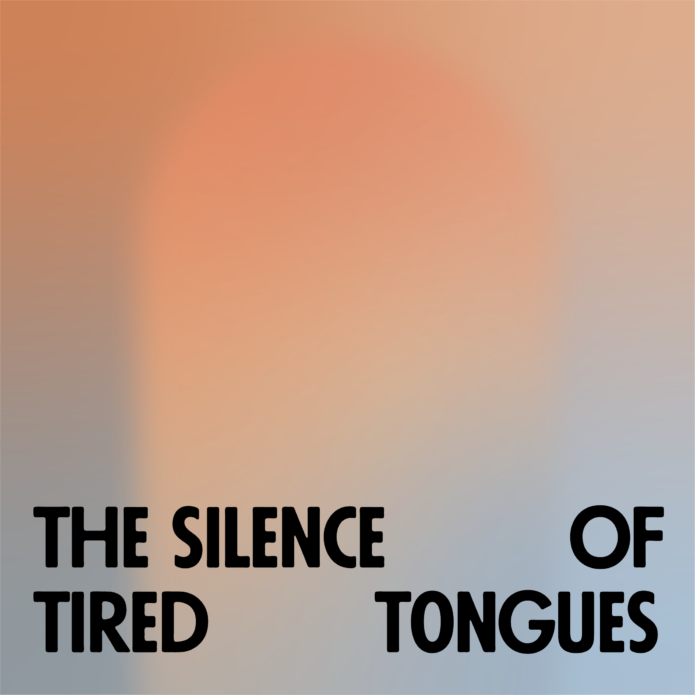
Exhibition: The Silence of Tired Tongues
Contemporary Art & Brazil
Agenda
Opening: The Silence of Tired Tongues
With Julia Arbex, Aline Baiana, Arthur Chaves, Vitória Cribb, Benedito Ferreira, Estêvão Parreiras, Luana Vitra & Raphael Fonseca
Network
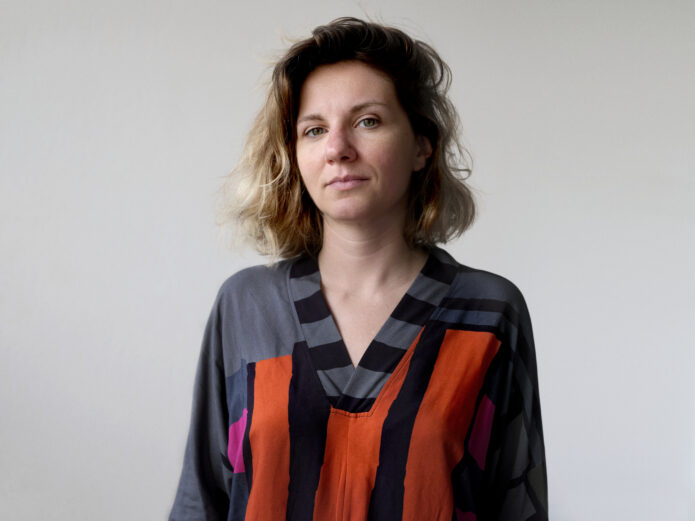
Juliana Prado Godoy
Architect

Tiago Sant’Ana
Visual artist and curator

Wisrah Villefort
Artist
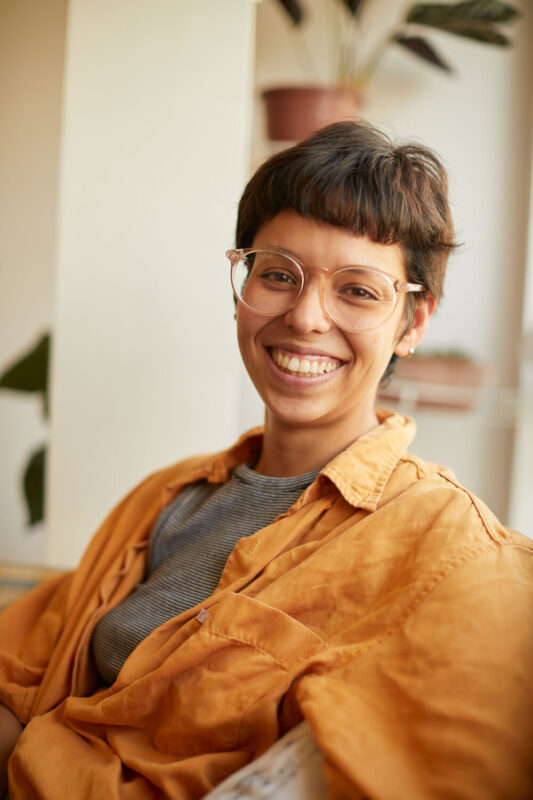
Yuli Yamagata
Sculptor
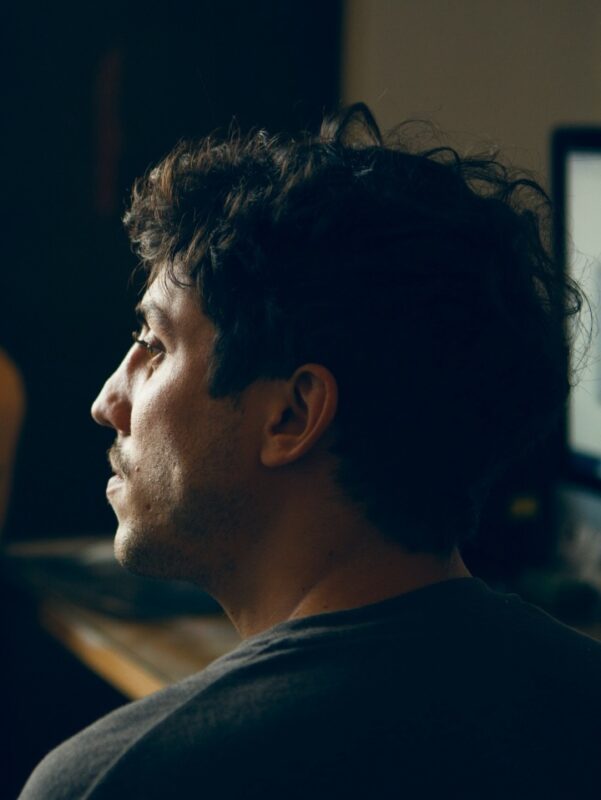
Rodrigo Martins
Artist

Arthur Chaves
Artist
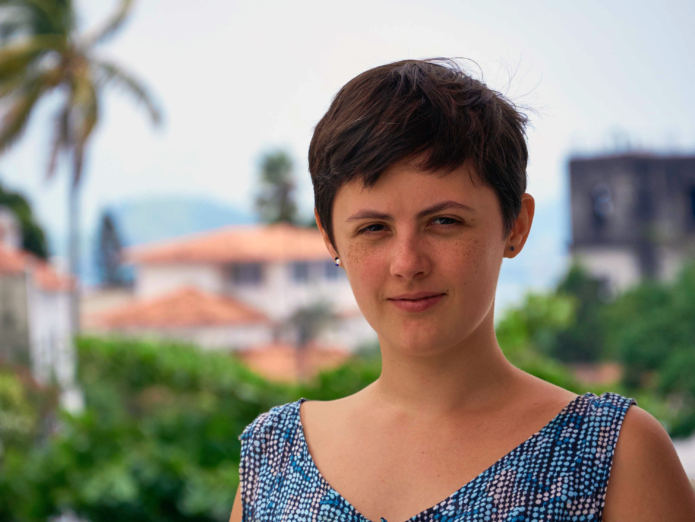
Sofia Caesar
Artist

Vitória Cribb
Designer / Artist XR
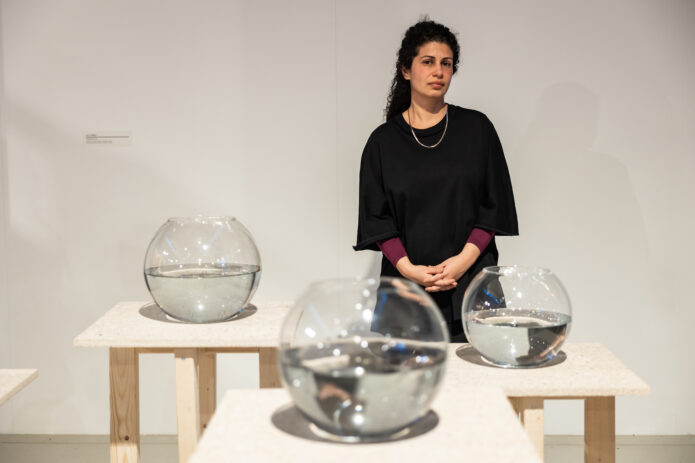
Julia Arbex
Artist

Tadáskía
Artist

Luana Vitra
Artist
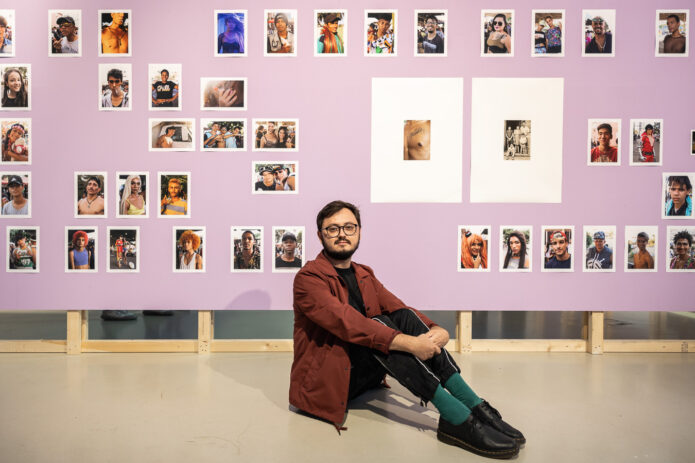
Benedito Ferreira
Visual artist and researcher

Estêvão Parreiras
Artist
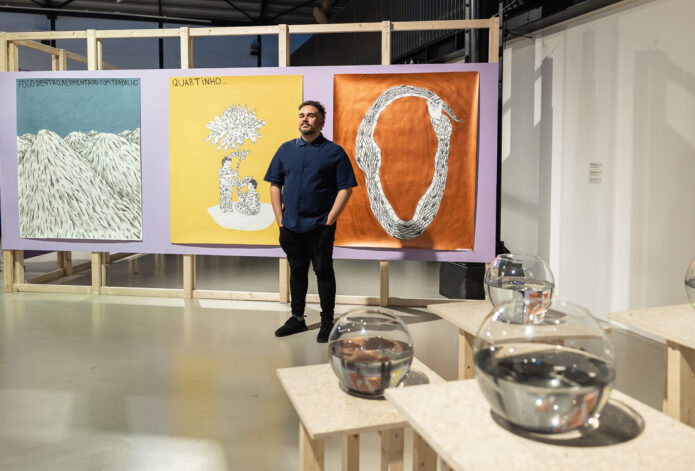
Raphael Fonseca
Curator and researcher
